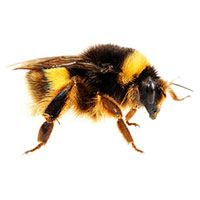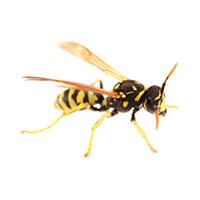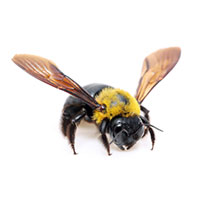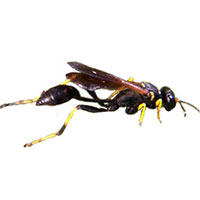Bumblebees in Wisconsin
There are more than 255 species of bumblebees worldwide. Bumblebees are large and robust insects covered with densely branched setae (hairs). They have short stubby wings and are beneficial as pollinators for many kinds of crops and ornamentals. Their wings beat 130 times or more per second according to the National Wildlife Federation. The beating combined with their large bodies vibrates flowers until they release pollen, which is called buzz pollination. This helps plants produce more fruit. The only bumblebees to survive winter are the queens. They hibernate in the soil in a location that will not warm up too quickly or too early in the spring (to avoid a potentially lethal early emergence). After emerging from an overwintering site, alone queen seeks out a suitable site to begin a new colony.
Bumblebee Habitats & Nests
Most bumblebees construct nests made of mud or clay in dry, dark underground tunnels made by other animals, such as old rodent burrows. Some bumblebees nest above ground in rock or tree crevices, around patio areas or decks, under porches, or in the eaves of roofs. They will build in any dry, protected area they find. Colonies are typically 50 to 400 bees with one dominant queen bee. Bumblebees are able to work in cooler weather.
Bumblebee Behaviors & Dangers
Since their stinger is smooth, bumblebee workers and the queens can sting more than once. Male bumblebees, on the other hand, cannot sting at all since they do not have a stinger. As part of the aggressive defense of their nests, bumble bees will chase invaders for a considerable distance. The bumblebee sting is considered to be one of the most painful.
If you are dealing with a bumblebee problem, always contact your local bee control experts.
Need help with Bumblebees?
We'll call you! Leave your information below.





